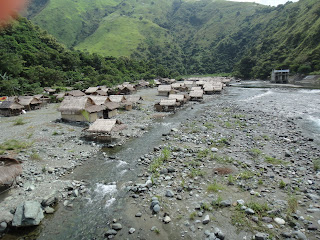2013 is coming in a few days and it's time for a year-end review of the things that happened in your life, specially your personal finance.
As an employee, my major source of capital is my active income from salary and allowance. I dedicate a portion of this to my savings as a payment for myself, my long-term investment. An expense that will buy my future.
If you also started saving already, how much did it grow in 2012?
If you put your money in a bank savings account, it grew by 0.75% MINUS 20% withholding tax. With this, it’s lunacy to keep your long-term investments in the bank. Yes, put your short-term money and emergency funds in the bank. But NEVER your long-term investments.
It is about this “Financially Ignorant” young woman, named Rowena, who almost doubled her money in 2 years.
Please read Rowena’s amazing story below…
How?
As an employee, my major source of capital is my active income from salary and allowance. I dedicate a portion of this to my savings as a payment for myself, my long-term investment. An expense that will buy my future.
If you also started saving already, how much did it grow in 2012?
If you put your money in a bank savings account, it grew by 0.75% MINUS 20% withholding tax. With this, it’s lunacy to keep your long-term investments in the bank. Yes, put your short-term money and emergency funds in the bank. But NEVER your long-term investments.
If you invested your money in mutual funds, the highest growth achieved was only 8.18%. But for those who invested in the Stock Market, their money grew 20%, 30%, 40% or even more.
Do you want to achieve the highest possible growth of your money for the years to come? Read the following story shared by Bo Sanchez.
Please read Rowena’s amazing story below…
Two years ago, I started investing P3000 to P5000 in the Stock Market. (It becomes P5000 when my very generous Dad gives me money. Thank you Dad!)
But I was totally ignorant about the Stock Market. So I just followed Brother Bo’s TrulyRichClub’s instructions each month, buying the stocks he recommended through his Stocks Update eReports.
And in two years, from October 2010 to October 2012, my Dad and I put in a total of P102,000 only. But it’s shocking for me to know that my Stock Market investment now stands at P193,325. That’s 89.53% increase in two years. Or an amazing 44.77% a year!You can be like Rowena and become a multimillionaire in 20 years.
-- Rowena Mallari, Video Editor
How?
Like Rowena, join the TrulyRichClub and use the Stocks Update eReports that will guide you how to invest in the Stock Market.
By the way, the TrulyRichClub isn’t just about Stock Market investing. That’s only one part. In the TrulyRichClub, aside from teaching people how to grow in their financial life, Bo also teaches people how to grow in their spiritual life. For what’s the use of growing in your finances if you lose your soul?
Being a member of the Truly Rich Club is a good thing. You will learn and develop skills to manage your earnings. You may not succeed or earn big instantly, but because of constant learning and positive outlook in life, success is inevitable.
If you want to be financially literate, join the TrulyRichClub and start creating your millions, click the link below:
If you want to be financially literate, join the TrulyRichClub and start creating your millions, click the link below:






















































